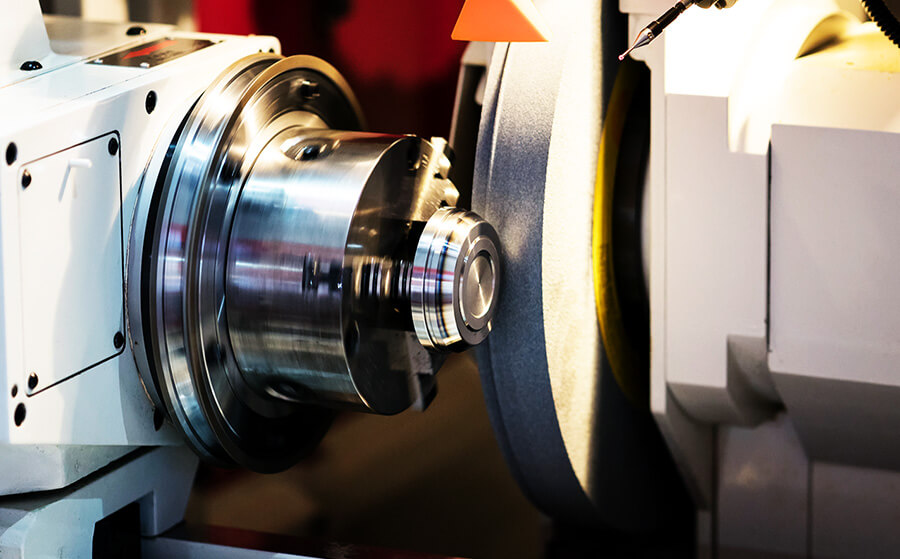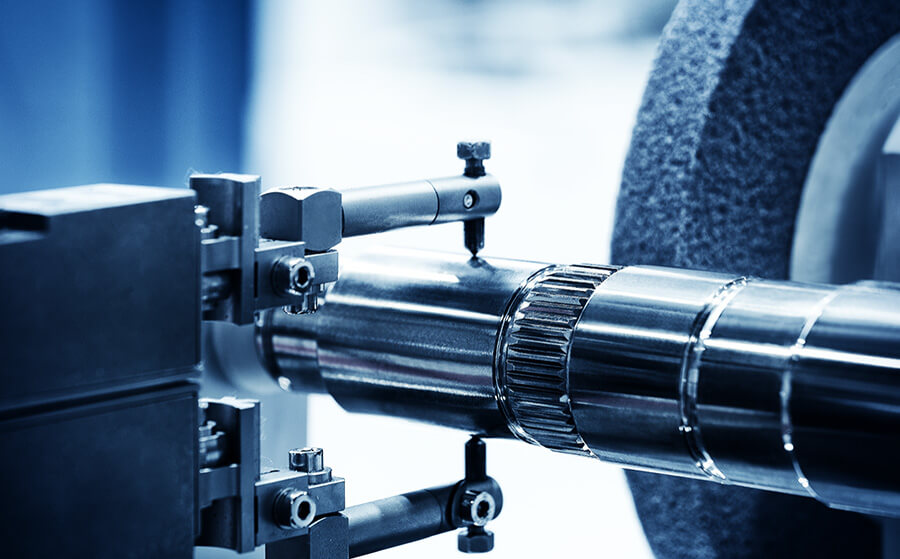CNC grinding of automobile, electric vehicle and power machinery parts
Precision Grinding Services - Achieve Micron-Level Accuracy with WKPT
World Known Precision Industry Co., Ltd. (WKPT) stands at the forefront of precision grinding services, delivering unrivaled surface perfection with our full-service machining capabilities. Our commitment to excellence spans from design and material supply to expert machining production, providing end-to-end solutions for a wide range of industries.
-
Understanding Precision Grinding and Its Applications
In the pursuit of ever-improving industrial product quality, the demand for precision in parts manufacturing has reached new heights, requiring accuracy down to the micrometer (㎛) level. While turning and milling machines are essential for many machining tasks, their precision cannot always achieve micron-level accuracy. As a result, grinding processes have become vital in achieving the required precision for various applications.
 A metal part of an automotive is being ground by a CNC external grinder.
A metal part of an automotive is being ground by a CNC external grinder. -
Materials Expertise and Optimal Grinding Solutions
With decades of experience, WKPT mastered the intricacies of grinding diverse materials, including aluminum, copper, cast iron, low-carbon steel, and stainless steel. These materials demand careful consideration of grinding wheel properties, configurations, and fineness to unlock their true potential. Our in-depth knowledge and strategic partnerships ensure that we consistently deliver the highest quality grinding results.
Precision Redefined - Wear, Accuracy, and Monitoring in Grinding
At WKPT, precision is not just a claim; it's a way of life. Throughout the grinding process, we meticulously monitor accuracy to counteract the natural wear of grinding wheels. Our expert team employs cutting-edge techniques and decades of experience to ensure that your workpieces retain their exceptional precision, batch after batch.
-
Surface Roughness Mastery and Temperature Control in Grinding
Surface roughness is a vital aspect of precision grinding, and we take every measure to master it. From optimizing cutting fluid super-heating rates to stabilizing workpiece clamping, our state-of-the-art grinding machines deliver surface finishes that exceed expectations. Moreover, WKPT understands the impact of environmental temperatures on metal materials and proactively implements dressing and compensation strategies to safeguard accuracy.
 Digital OD Micrometer for Quality Control
Digital OD Micrometer for Quality Control -
Experience the Excellence of WKPT's Precision Grinding Services
At WKPT, precision takes precedence as we uphold the highest standards in the industry. With cutting-edge grinding equipment and a team of skilled professionals, we consistently achieve micrometer-level accuracy and provide superior surface finishes. Our expertise spans across surface grinding, ID grinding, and OD grinding, allowing us to excel in meeting the most exacting demands of precision machining.
Through extensive research and collaboration with our supply chain and vendors, we maintain rigorous control over the quality of our high-precision grinding processes. This approach ensures that our products consistently meet and exceed the stringent standards set for precision machining, giving our customers confidence in the reliability and performance of our services.
Experience the pinnacle of precision grinding with WKPT. Contact us to discuss your specific requirements and discover how our state-of-the-art grinding equipment and skilled team can elevate the quality and accuracy of your projects.
